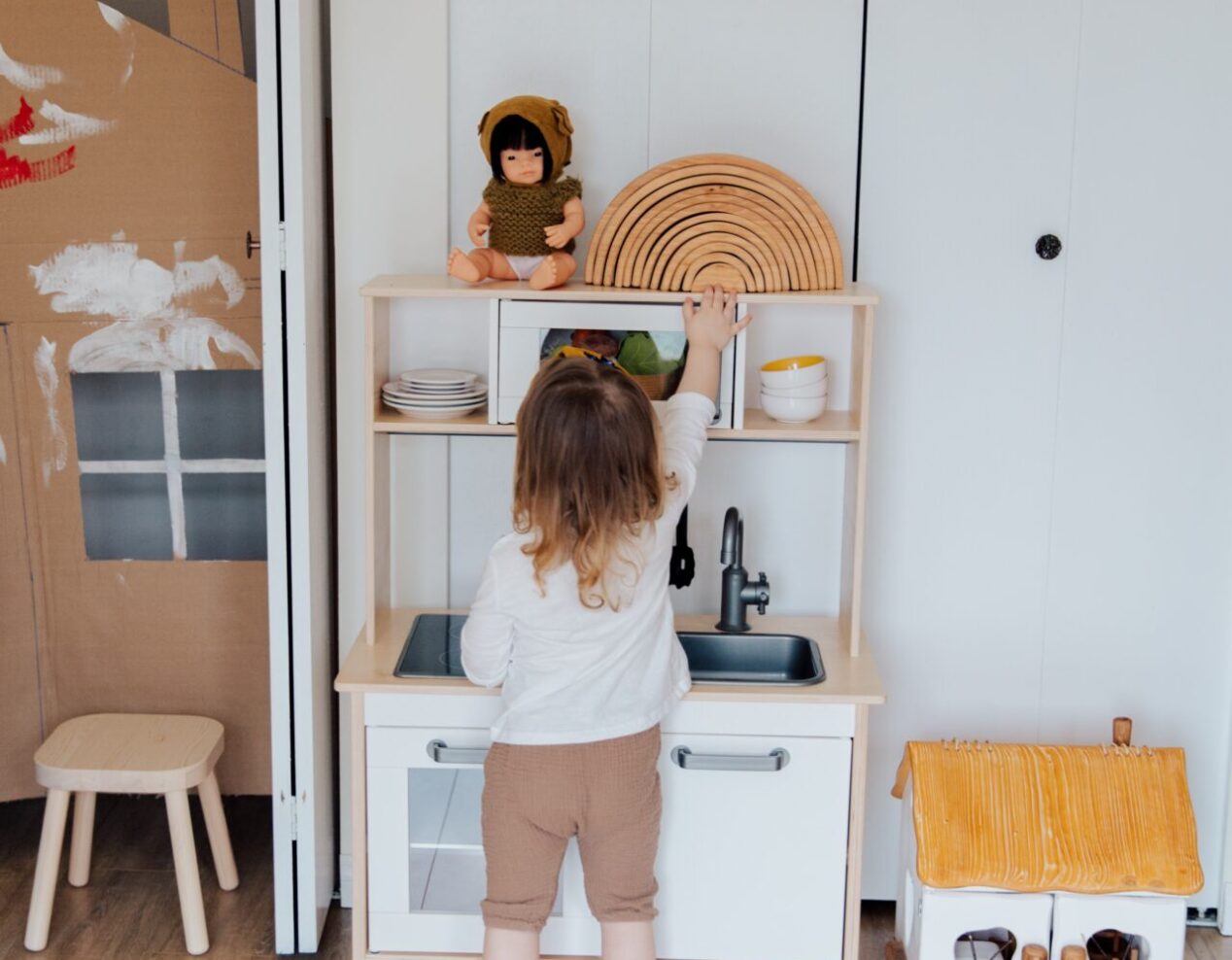Why the Howtoplay Subscription Toys Excel Over Traditional Toys

In the realm of childhood, toys serve as more than just playthings; they shape pivotal developmental milestones. While brands like Fisher Price stand as mainstays in the traditional toy market, Montessori-inspired Howtoplay subscription toys emerge as frontrunners in driving enhanced developmental outcomes. Dive with us into the research-anchored reasons that propel Howtoplay to the forefront of the toy universe.
- Championing Meaningful Play
The essence of Howtoplay is deeply intertwined with the Montessori doctrine, emphasizing play that serves a purpose — not just amusement but methodical skill cultivation.
Evidence-backed Insight: Lillard’s exploration in the Journal of School Psychology underscores that youngsters engaging with Montessori tools and environments exhibited heightened academic and social prowess over peers in traditional settings (1). Central to this advantage is the deployment of deliberate, skill-augmenting materials.
- Toys Synced with Age and Development
Howtoplay prizes alignment: ensuring each toy complements the child’s age and developmental landmarks. The result? No overwhelming or tedious instances, just seamless growth.
Evidence-backed Insight: Rogoff’s examination from the University of California puts forth the idea that kids flourish when challenged just slightly above their current competency (2). By calibrating toys to developmental junctures, Howtoplay naturally underpins this progressive trajectory.
- A Rich Multisensory Adventure
Every Howtoplay toy is a sensory ensemble, encouraging youngsters to tap into varied senses. This multifaceted engagement is a catalyst for enriched cognitive evolution.
Evidence-backed Insight: The Journal of Applied Developmental Psychology cites that sensory play is pivotal for refining problem-solving acumen and bolstering memory (3).
- Simplicity as a Beacon for Focus
Stripped of dizzying hues or sounds, Howtoplay toys’ design simplicity propels children towards imaginative ventures and anchored concentration.
Evidence-backed Insight: Research from the University of Toledo postulates that a restrained toy environment paves the way for a more resourceful and profound play experience (4).
- Pledging Allegiance to Mother Earth
Howtoplay is unwavering in its endorsement of sustainable, planet-friendly materials.
Evidence-backed Insight: Eco-centric toys don’t just cater to immediate benefits but ignite a long-term eco-conscious spirit. Introducing youngsters to such toys can plant the ideals of environmental responsibility (5).
- Honoring the Legacy of Traditional Toys
Amid the lauding of Howtoplay, it’s paramount to celebrate the merits inherent in traditional toys. The differentiating factor? Howtoplay’s meticulous, age-attuned methodology.
In Conclusion
The world of childhood brims with both traditional stalwarts and Montessori-inspired prodigies like Howtoplay. Yet, drawing from empirical studies, it’s evident that Howtoplay’s commitment to purpose-filled play and age-aligned offerings positions it a notch above in guiding the intellects of tomorrow.
Howtoplay vs. Traditional Toys: At a Glimpse
When juxtaposed, the superior elements of Howtoplay toys come to the fore compared to traditional offerings:
| Feature/Aspect | Howtoplay | Traditional Toys |
| Emphasizes Meaningful Play | ✅ | ❌ |
| Synced with Age & Development | ✅ | ❌ |
| Offers Multisensory Engagement | ✅ | ❌ |
| Simplicity for Enhanced Focus | ✅ | ❌ |
| Commitment to Sustainability | ✅ | ⭕ |
| Comprehensive Age-Focused Approach | ✅ | ❌ |
Harnessing a blend of Montessori principles with modern-day toy design acumen, Howtoplay emerges as a frontrunner in children’s holistic development. Dive into the world of Howtoplay and witness the transformative growth in your child’s play and learning experiences.
Note: The symbols in the table represent the following: ✅: Feature is present and emphasized ❌: Feature is lacking or not emphasized ⭕: Feature may be present to some extent, but not consistently.
Footnotes
- Lillard, A. S. (2012). Preschool children’s development in classic Montessori, supplemented Montessori, and conventional programs. Journal of School Psychology, 50(3), 379-401.
- Rogoff, B. (1990). Apprenticeship in thinking: Cognitive development in social context. Oxford University Press.
- Pierroutsakos, S. L., & Troseth, G. L. (2003). Video Verité: Infants’ manual investigation of objects seen in video. Journal of Applied Developmental Psychology, 24(3), 309-332.
- Dauch, C., Imwalle, M., Ocasio, B., & Metz, A. E. (2018). The influence of the number of toys in the environment on toddlers’ play. Infant Behavior and Development, 50, 78-87.
- Grønhøj, A., & Thøgersen, J. (2012). Why young people do things for the environment: The role of parenting for adolescents’ motivation to engage in pro-environmental behavior. Journal of Environmental Psychology, 32(4), 277-284.


